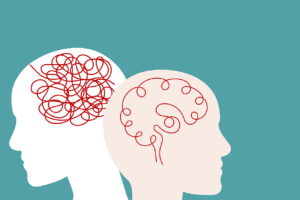
The simple act of stretching
Most people would assume that stretching is only necessary when going for a run, playing sports, lifting weights, or after becoming injured. However, stretching at least once a day may contribute to physical and mental health. Daily stretching has been shown to increase range of motion, flexibility, and blood flow to muscles; it also reduces stress, among other benefits. When we don’t stretch, muscles become shorter and tighter, which can lead to a reduction in range of motion and flexibility or even increase risk for injuries. Our everyday activities — including driving, sitting in a chair, or looking at a screen — can also cause the muscles to tighten and cause pain. Below are ways that stretching benefits overall health, along with tips to begin a daily stretching routine.
Physical Health
It’s no secret that stretching can physically improve our well-being. One study found that males at the age of 28 had a range of motion of 13.9% in their shoulder joint compared to 85-year-old males, whose range of motion was only 5.2%. This loss of flexibility and range of motion can be caused by aging or, again, by the everyday tasks that we perform, which leave muscles feeling tightened due to inactivity or the position of the muscle.
But the good news is there’s an easy fix to combat stiffness from daily activities: Another study found that stretching five times per week for six weeks showed an increase in range of motion up to 2.4 degrees per week in each muscle group. Importantly, the participants stretched only for a duration of 15, 30, and 60 seconds. Small bouts of stretching like this have been shown to increase blood flow to the muscle and cartilage, helping to increase the delivery of nutrients to the muscle and reduce muscle soreness.
Mental Health
Not only does stretching help with physical health, but it also seems to give a boost to mental health. Everyone experiences stress to some degree — some more than others. Stress can cause muscles to become tense, which in turn causes muscles to tighten, leading to discomfort and chronic pain. Stretching reduces the muscle tension, thereby reversing the cycle of tension, then tightening, and pain. Stretching has been shown to increase serotonin levels — i.e., the hormone that helps stabilize our mood, reduce stress, and overall makes us feel good — which causes a decrease in depression and anxiety.
Tips
When learning how to stretch, it is very important to not rush yourself and instead ease into stretching.
- Start by stretching two to three times per week and hold the stretch for 15 to 30 seconds. When comfortable with these durations, you can move to a 60-second hold in each position
- Students from the Department of Health and Exercise Science at CSU have developed an exercise video library via the Center for Healthy Aging’s THRIVE Project. Visit here for my easy, introductory full body stretch video.
- A quick Google search can bring up multiple websites and YouTube videos for daily stretch routines with different types of techniques. When looking at these websites, be sure to focus on static and dynamic stretching techniques and avoid ballistic techniques, like this, which increase risk for damage to the joints and soft tissues. Dynamic stretching is when you use movement to stretch the muscles. For example, high knees is a great way to dynamically stretch your hamstrings. Static stretching involves stretches held in place for a period of time, like this standing hamstring stretch.
- Finally, trust your body and what it is telling you. Regardless of these tips, your body is the only thing that is going to know what is working for you, so be sure to listen and stop stretching if discomfort or pain arises
Now that you have some background knowledge and tips, get out there and start stretching.
ABOUT THE AUTHOR
Bryan Adams-Colon received his degree in Health and Exercise Science with a concentration in Health Promotion and a minor in Business Administration in May 2021. This past spring, he completed his practicum with the THRIVE Project and Healthy Aging Fitness here at the Columbine Health Systems Center for Healthy Aging.





